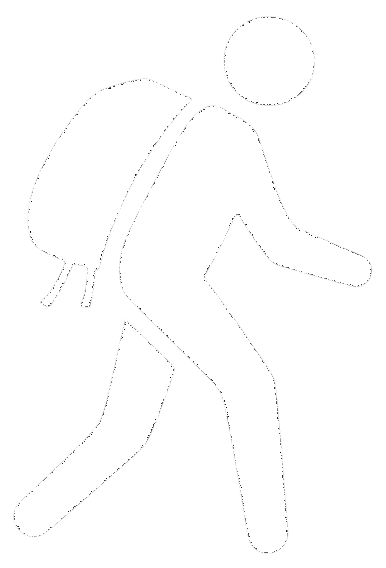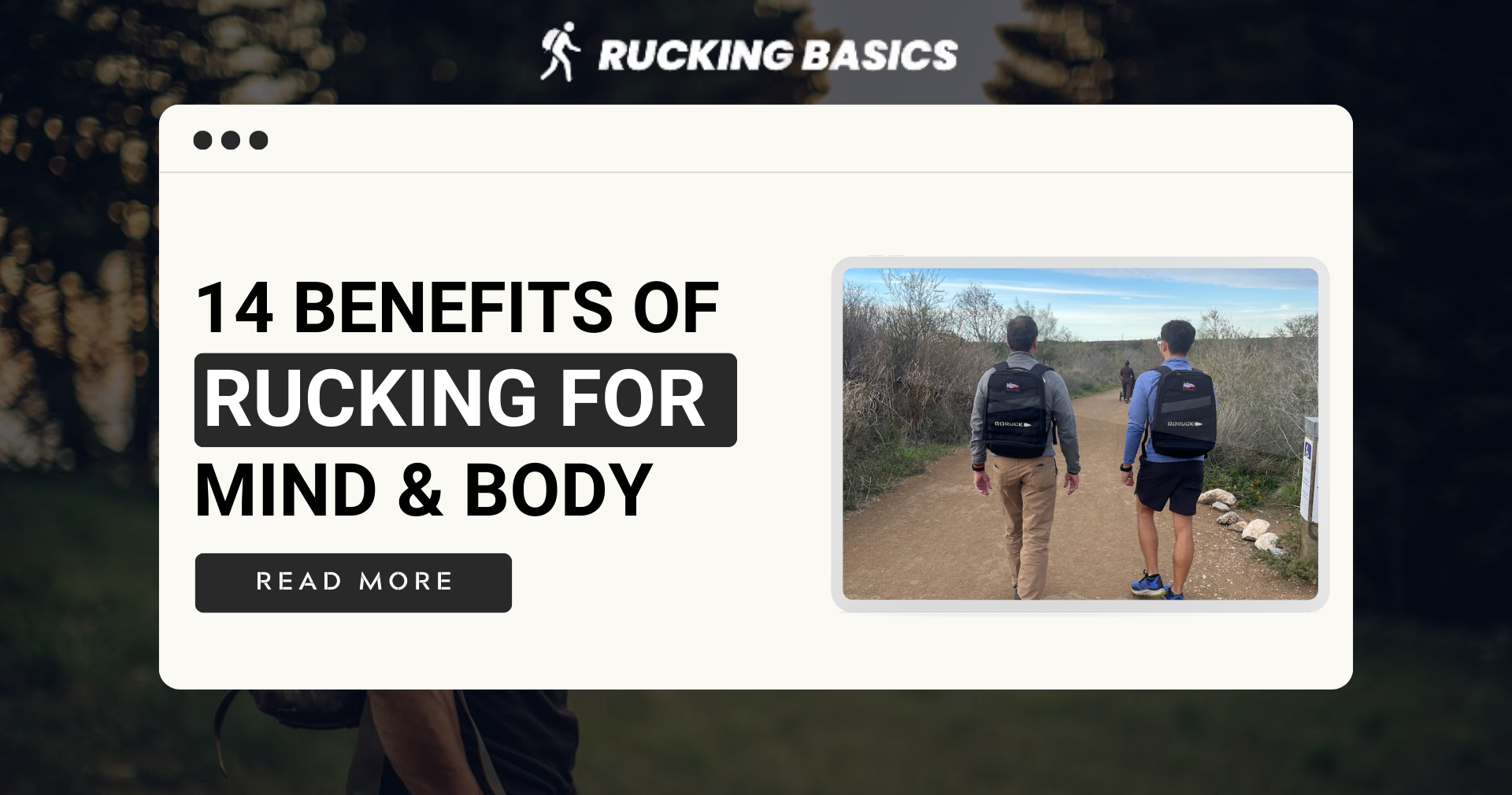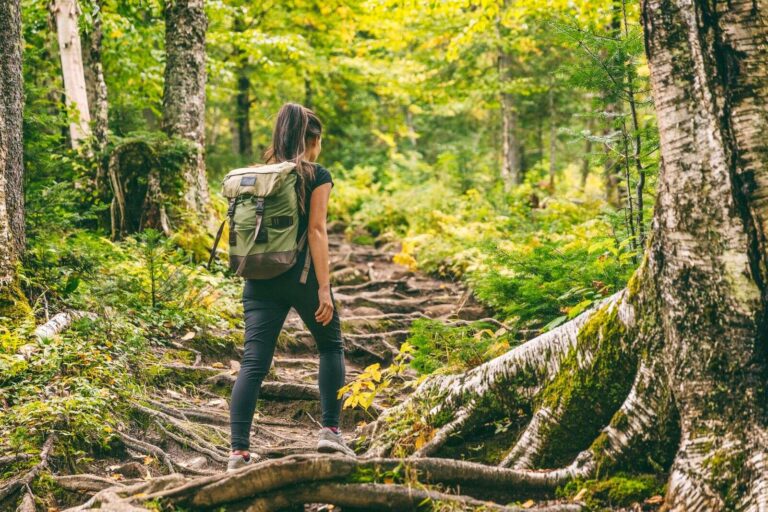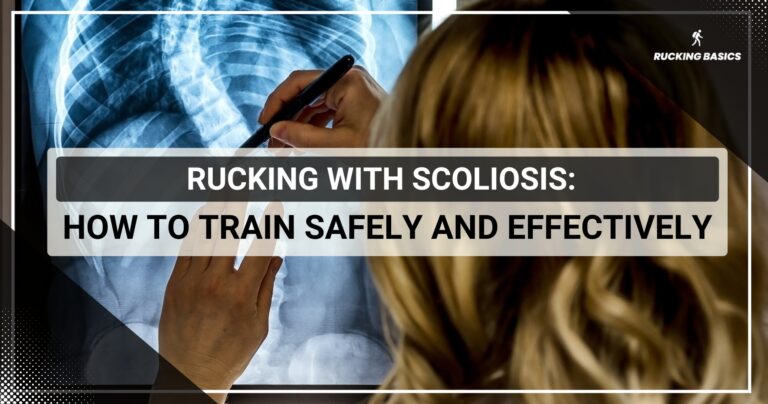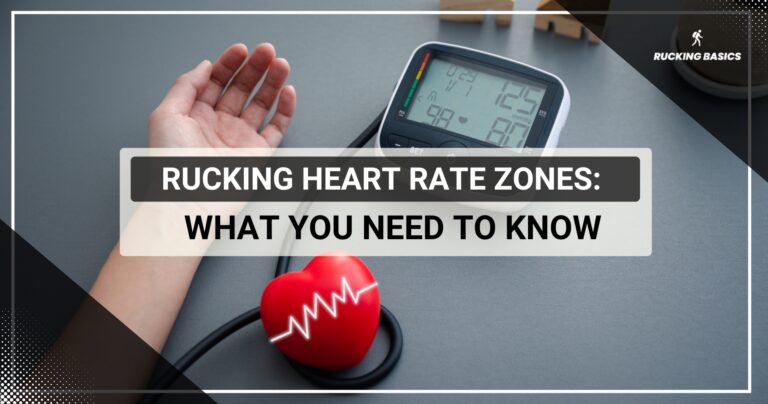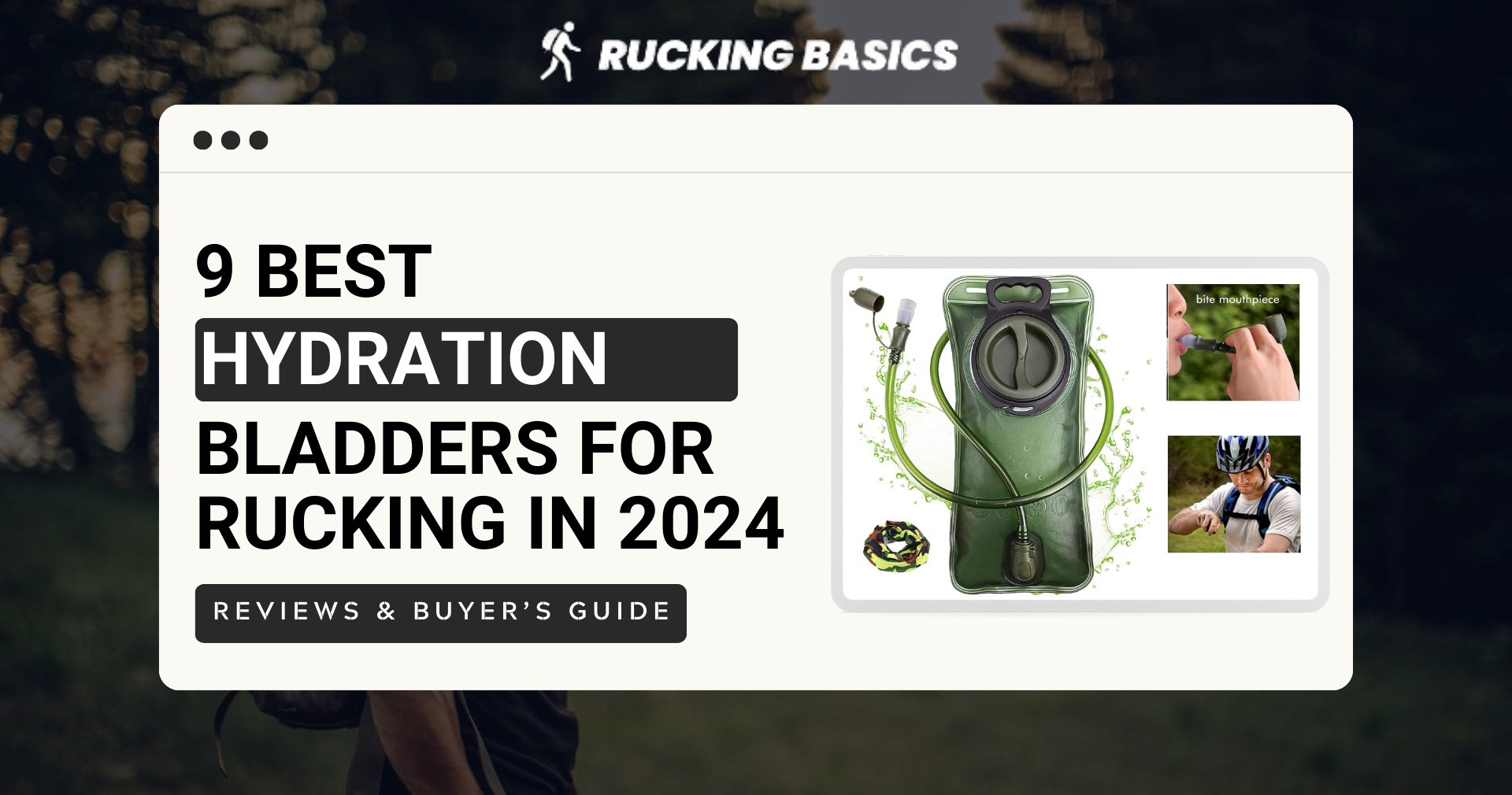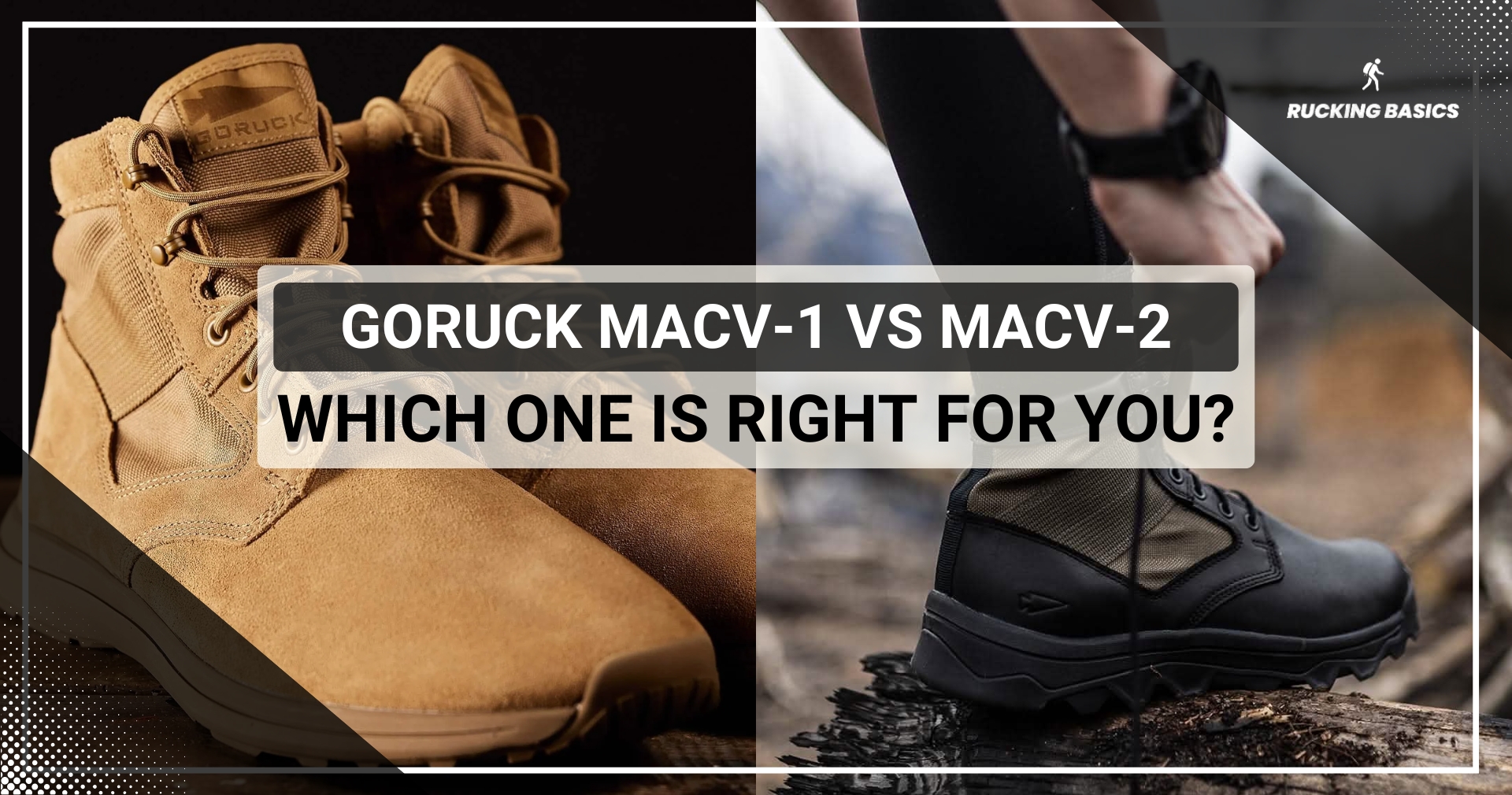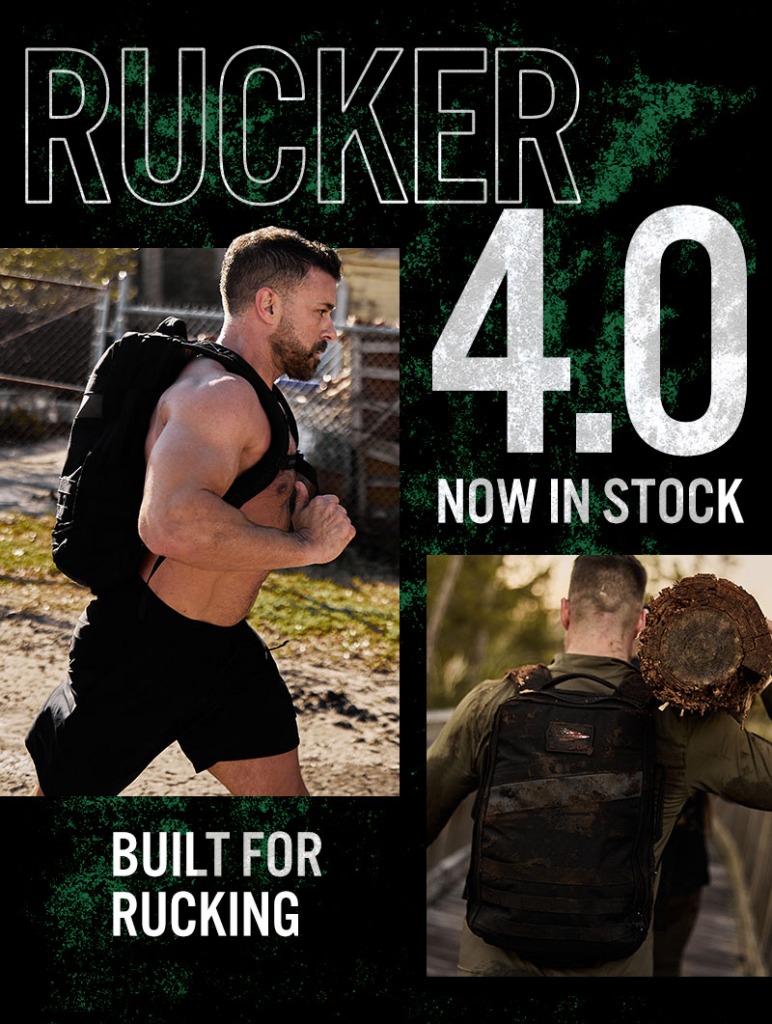“There is incontrovertible evidence that regular physical activity contributes to the primary and secondary prevention of several chronic diseases and is associated with a reduced risk of premature death.” — this sentence from the summary of the narrative review published in the “Canadian Medical Association Journal” stuck deep in my mind after I read it for the first time. (1)
We live in a sedentary age. We have never been less physically active in history, and that is why chronic diseases are on the rise. Also, we have entirely distanced ourselves from nature.
Fortunately, there is an activity that can help us solve both problems — rucking. In this article, learn all the benefits of this fantastic activity that has gained popularity in recent years due to its numerous health and fitness benefits.
What is Rucking?
I know that most of you are familiar with rucking, but I want to explain briefly to those who may have just heard about this activity and are now researching its benefits.
Rucking workout is basically walking with a purpose – and that purpose involves carrying a backpack filled with weight and hitting the trails, streets, or whatever terrain you fancy. It originates from military training.
It’s like a cousin of hiking but with even more benefits. You can load up your pack with anything from books to bricks. Or you can buy specialized weight plates – anything that will add an extra challenge to your stroll.
Rucking engages muscles all over your body, from your calves to your core to your arms.
Benefits of Rucking
I’m about to explore the key rucking benefits.
There are so many of them, but I will single out the most important physical and emotional ones. Hopefully, all that will encourage you to start rucking as soon as possible or increase the frequency of going to the ruck.
Cardiovascular Health
It has been proven in many studies that exercise and other physical activities, including rucking, have a huge impact on cardiovascular health. (2)
Daily workouts are the most useful form of prevention, but it is also an important treatment for patients with cardiovascular problems.
Rucking isn’t just a stroll in the park; it can be vigorous exercise for your heart. With each step taken while rucking, the heart pumps intensely. In this way, its efficiency is increased and fortifies the cardiac muscle. This results in a notable improvement in overall cardiovascular health, effectively lowering the risk of heart disease and stroke.
Strengthens Lower Body Muscles
We all know that squats and lunges are 101 lower-body exercises. I never saw a gym program without those two exercises.
Now imagine every step as a mini squat or lunge – that’s the magic of rucking for your lower body. You will do thousands of mini lunges during each ruck, especially if the terrain is uneven.
The additional weight in your backpack intensifies the workout for your calves, quadriceps, hamstrings, and glutes. Progress in your lower body’s strength will be noticeable after just a few sessions.
Enhances Core Strength and Improves Posture
Yes, rucking can do wonders for your legs, but it’s much more than that. Rucking activates your entire body, including your core. Balancing and stabilizing with a weighted pack requires your core muscles to work overtime.
This translates to better posture, reduced risk of back pain, and improved overall performance in other activities. So, despite seeming logical that a weighted backpack leads to back pain, the truth is quite the opposite.
Supports Weight Loss and Maintain Healthy Weight
I’m always telling my clients that walking, although very healthy, is not a calorie-burning activity. You will need to walk tens of kilometers every day to burn enough calories.
But there is an exception, perfect for all those who cannot/do not want to run or do some type of HIIT training, and that is rucking. Rucking with a weighted pack turns ordinary walking into a high-intensity workout that torches calories.
Elevated heart rate and weight greater than your body weight means you burn more calories than traditional walking or hiking. Rucking is definitely a time-efficient option for those looking to shed pounds and boost metabolism.
Maintaining a healthy weight is equally crucial and sometimes even more challenging. You have to find balance and consistency in your fitness routine. Regular rucking provides the perfect recipe for maintaining a healthy weight.
Boost Endurance and Stamina
Have you ever gone grocery shopping and panted after carrying two bags to the parking lot?
Whether the answer is yes or no, you will greatly benefit from the improved endurance that will inevitably result from regular rucking. Don’t expect to build endurance and stamina overnight; they’re earned with every step taken on the rucking trail.
However, if you are persistent, you will see how regular outings gradually improve your endurance and stamina. As you cover longer distances, increase the weight in your backpack, and tackle more challenging terrain, your body will adapt to the demands.
Stress Reduction
Indications suggest that the average high school student experiences stress levels comparable to those of a corporate executive sixty years ago. Whether it is 100% correct is debatable, but the point is clear to you – we are all exposed to extreme stress, regardless of occupation and place of life.
The benefits of rucking go far beyond the physical ones. Reducing stress is one of the main benefits we can get. The rhythmic motion of walking combined with the serene backdrop of the great outdoors can work wonders for reducing stress levels. Also, I always feel a reduction in stress after strength training, and rucking can be considered endurance strength training.
Better Mood and Reduces Anxiety
Much like runners and marathoners, ruckers also experience their own euphoric sensation, similar to the famous “runner’s high.” (3)
The physical exertion during rucking triggers the release of endorphins – those neurotransmitters that flood the brain with feelings of happiness and contentment. So, instead of reaching for Prozac or illegal substances, you can make yourself happier and less anxious through physical activity. And that’s not all – the natural environment during rucking also helps.
Requires Minimal Equipment
Let’s take golf or tennis, for example – to get started, you need to invest a significant amount of money in specialized equipment.
Rucking requires just two things: a sturdy backpack (or a weighted vest) and some extra weight. Whether you’re using a military-style rucksack or a basic backpack filled with household items, the equipment needed for rucking is minimal and readily available.
Okay, you also need high-quality shoes, socks, and preferably some moisture-wicking clothes, but you can still buy all that without breaking the bank.
Can be Done Anywhere, Anytime
One of the most significant advantages of rucking is its versatility. Whether you live in the heart of the New York, the quiet suburbs, or the wilderness, rucking can be done virtually anywhere.
You don’t have to look for a well-maintained, probably expensive tennis court, golf course, or basketball court.
Accessible to All Fitness Levels
Rucking isn’t just for elite athletes or fitness fanatics; I have seen all types of people during the rucks – from ex-professional athletes to older adults with hip problems.
Why is it so suitable for all fitness levels? Because neither the weight nor the distance you have to cover is written in stone. Start slow and gradually increase intensity over time.
Builds Connection
I would also like to mention one social benefit.
Rucking can be a solo activity, but it usually isn’t. Whether you’re rucking with friends or joining local GoRuck clubs, the shared experience fosters a sense of camaraderie and connection like no other.
The support and encouragement of your fellow ruckers can make all the difference on those tough days when motivation is low and you have other worries that would otherwise make you quit.
Aids in Injury Rehabilitation and Recovery
It wouldn’t classify rucking as a low-impact activity, but it is still far more suitable for those recovering from injuries than ball sports. The main reason is certainly the controlled nature of rucking, so you can incorporate it into the recovery plan.
If you seek to prevent potential injuries, even better. Unlike high-impact activities like running, rucking will improve bone density, strengthen muscles, tendons, and ligaments without putting undue strain on joints.
Promotes Healthy Aging
As we age, maintaining physical fitness and mobility becomes harder. Rucking is the solution for improving strength, balance, and coordination, thus supporting healthy aging.
Physical activity has even been associated with increased lifespan. (4)
Enhances Functional Fitness for Daily Activities
One of my favorite benefits of rucking is its ability to enhance functional fitness for daily activities. It is undoubtedly one of the first benefits I mention to my clients over 60.
By engaging multiple muscle groups and movement patterns, rucking helps perform tasks such as lifting, carrying, and walking with ease. This improved functional fitness translates to greater independence and confidence. It directly affects the quality of life and satisfaction.
Concluding The Benefits Of Rucking
Whether you’re looking to improve cardiovascular health, manage weight, or enhance mental resilience, rucking has something to offer for everyone in the community.
Another advantage is that anyone can engage in this activity, regardless of their current fitness level. And you don’t have to spend a fortune purchasing equipment, so you can start right away.
Grab your backpack, add some weight, and start reaping the rewards today!
Frequently Asked Questions
Will rucking help me build muscle mass like weightlifting?
Rucking won’t build muscle mass like weightlifting because the focus is on cardiovascular endurance and overall fitness. However, it can contribute to muscle growth, particularly in the lower body and core. The added weight in your backpack provides resistance, challenging your muscles and promoting strength development over time. So, rucking can’t replace traditional weightlifting for muscle mass gains, but it is a valuable addition to your overall fitness routine.
How does rucking compare to hiking in terms of physical and mental benefits?
Rucking and hiking share many similarities in terms of physical and mental benefits, but there are also some key differences between the two activities. Rucking involves carrying a weighted pack, adding extra challenge and intensity to the workout. This can lead to greater calorie burn, muscle activation, and cardiovascular demands than hiking. Additionally, rucking can be a more accessible and time-efficient option.
What’s the best way to choose the right backpack for rucking?
When selecting a backpack for rucking, opt for one that is sturdy, comfortable, and capable of carrying significant weight. Look for features such as padded straps, adjustable hip belts, and multiple compartments for organizing your gear.
Are there any specific safety precautions I should take while rucking?
While rucking is generally a safe and enjoyable activity, taking some precautions to ensure your safety on the trail is essential. Always wear appropriate footwear with good traction to prevent slips and falls, and dress in layers to stay comfortable in changing weather conditions. Bring plenty of water and snacks to stay hydrated and energized, especially on longer rucks. Also, be mindful of your surroundings and watch for obstacles or hazards on the trail.
Are there any nutritional guidelines to follow for optimal rucking performance?
Before heading out on a ruck, fuel up with a balanced meal containing complex carbohydrates, lean protein, and healthy fats to provide sustained energy. During longer rucks, stay hydrated by drinking plenty of water and sports beverages. After your ruck, refuel with a combination of protein and carbohydrates to replenish glycogen stores.
References
- Warburton DE, Nicol CW, Bredin SS. Health benefits of physical activity: the evidence. CMAJ. 2006 Mar 14;174(6):801-9. doi: 10.1503/cmaj.051351. PMID: 16534088; PMCID: PMC1402378.
- Pinckard K, Baskin KK, Stanford KI. Effects of Exercise to Improve Cardiovascular Health. Front Cardiovasc Med. 2019 Jun 4;6:69. doi: 10.3389/fcvm.2019.00069. PMID: 31214598; PMCID: PMC6557987.
- Reimers CD, Knapp G, Reimers AK. Does physical activity increase life expectancy? A review of the literature. J Aging Res. 2012;2012:243958. doi: 10.1155/2012/243958. Epub 2012 Jul 1. PMID: 22811911; PMCID: PMC3395188.
